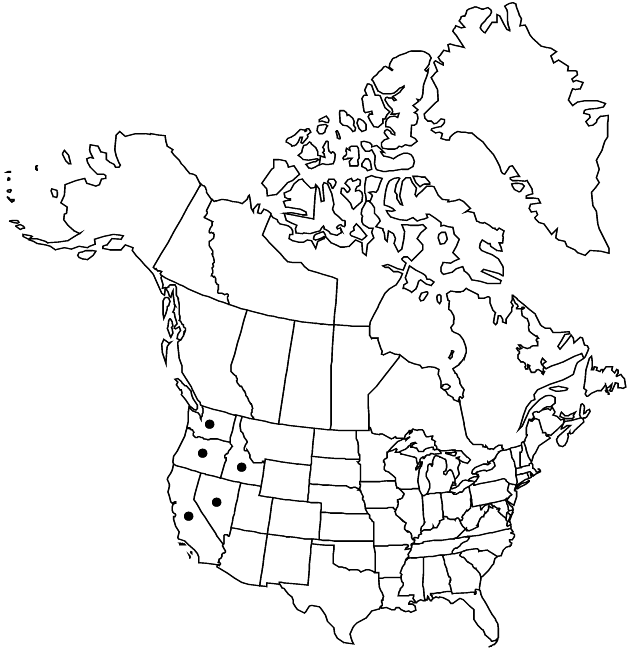Helianthus cusickii
Proc. Amer. Acad. Arts 21: 413. 1886.
Perennials, 60–120 cm (taproots stout, parsniplike). Stems erect to prostrate, glabrous or glabrate. Leaves cauline; mostly opposite, petioles 0–1 cm; blades (light to dark green, 3-nerved at bases) lance-linear to lanceolate, 5–15 × 0.5–2.5 cm, bases cuneate, margins entire, abaxial faces glabrous or scabro-hispid, gland-dotted. Heads 1–3. Peduncles 2–10 cm. Involucres hemispheric, 12–28 mm diam. Phyllaries 12–18, lanceolate, 11–18 × 1.5–3 mm, apices acute to acuminate, abaxial faces gland-dotted. Paleae (lanceolate) 9–13 mm, subentire or 3-toothed (apices sparsely hairy, sometimes gland-dotted). Ray florets 12–16; laminae 20–35 mm (abaxial faces gland-dotted). Disc florets 40+; corollas 6.5–7.5 mm, lobes yellow; anthers usually dull orange or orange-brown, sometimes yellowish, appendages dull orange to yellowish. Cypselae 4–5 mm, glabrate; pappi of 2 aristate scales 3–4.2 mm. 2n = 34.
Phenology: Flowering late spring–summer.
Habitat: Dry slopes, open woods
Elevation: 600–2000 m
Distribution

Calif., Idaho, Nev., Oreg., Wash.
Discussion
Selected References
None.